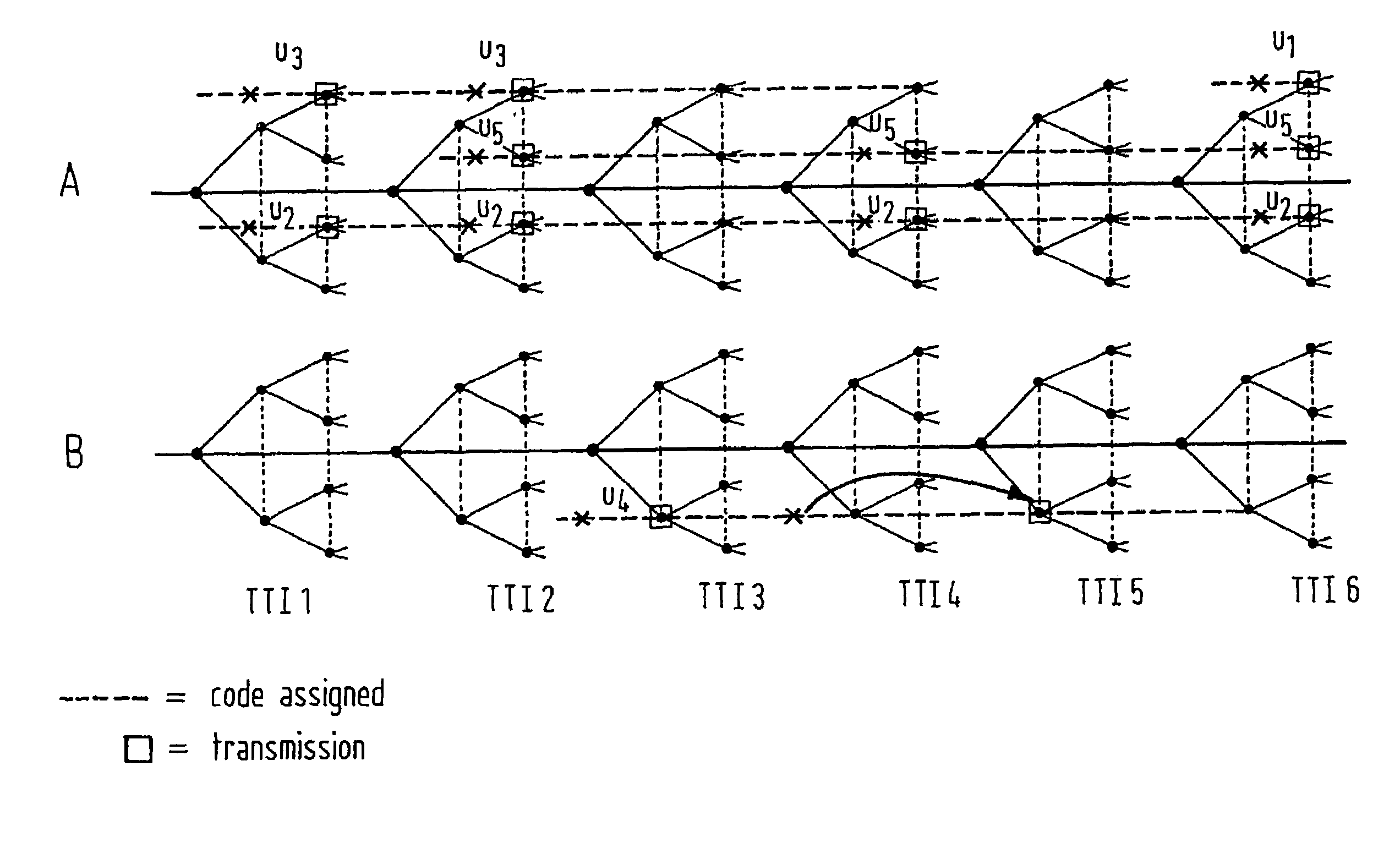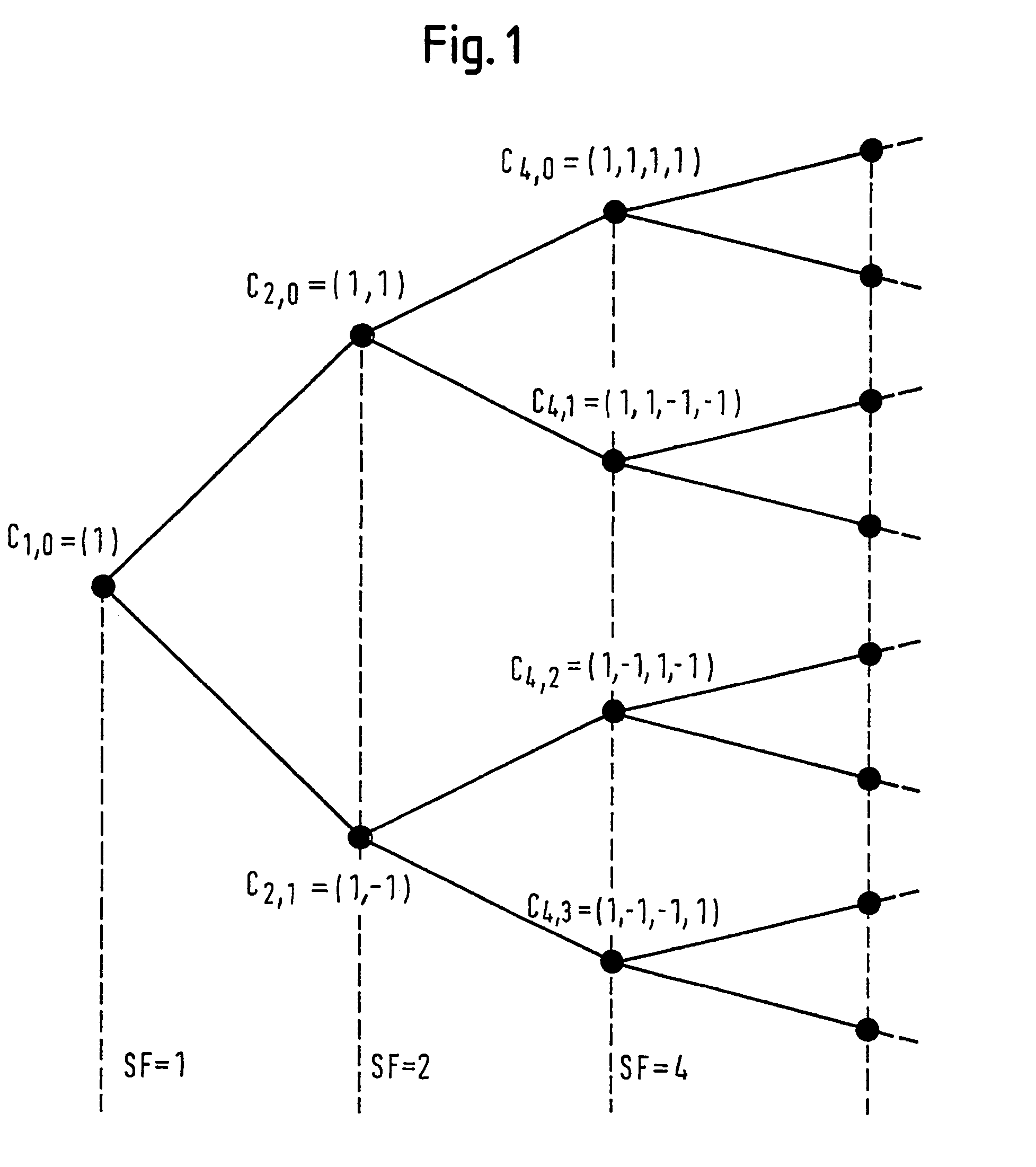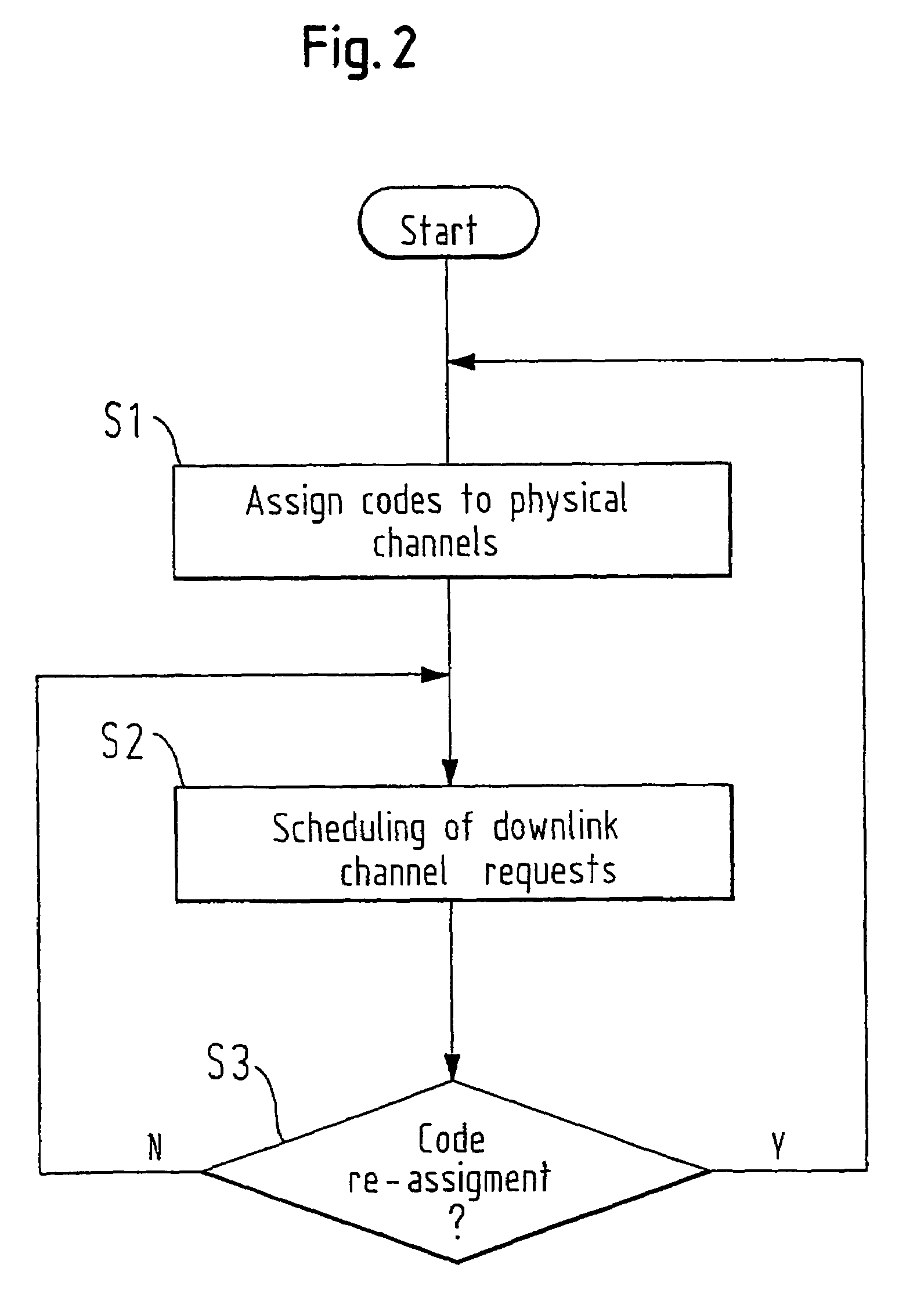Downlink scheduling using parallel code trees
a code tree and code technology, applied in the direction of multiplex communication, orthogonal multiplex, wireless communication, etc., can solve the problems of cdma cellular mobile communication networks that perceive code limitation, restrict users' access, and the number of available channelization codes will often be a limiting factor, so as to avoid code limitation, reduce data transmission quality, and avoid interference
- Summary
- Abstract
- Description
- Claims
- Application Information
AI Technical Summary
Benefits of technology
Problems solved by technology
Method used
Image
Examples
first embodiment
[0058]FIG. 4 shows an explanation of a scheduling method according to a The dashed line in FIG. 4 illustrates the maintenance of a code assignment over a plurality of transmission time intervals TTIi. Rectangles illustrate transmission of data using specific codes previously assigned. Requests for data transfer are illustrated by asterisks.
[0059]As shown in FIG. 4, the transfer of data is achieved via downlink physical channels using codes selected from different code trees A and B. Requests (*) to access downlink channels are received until the beginning of transmission time intervals, e.g., for the user u1 before TTI6, for the user u2 before TTI1, TTI2, TTI4 and TTI6, for the user u3 before TTI1 and TTI2, for the user u4 before TTI3 and TTI4, and for the user u5 before TTI2, TTI4, and TTI6.
[0060]The access to downlink channels is scheduled considering the assignment of codes from different code trees to the downlink channels or users.
[0061]As shown in FIG. 4, for the first two tr...
second embodiment
[0068]FIG. 5 shows an explanation of a scheduling method according to a Here, similar symbols and signs are used to illustrate the same aspects and will therefore not be explained again.
[0069]As shown in FIG. 5, the second embodiment differs over the previous embodiment shown in FIG. 4 in that the number of used code trees A, B, C, and D is increased. This allows to further reduce the necessary code management to a minimum extent. Without restricting the scope and only for the purpose of explanation it may be assumed that user u3 uses a code of code tree A, that user u5 uses a code of code tree B, that user u2 uses a code of code tree C, and that user u1 uses a code of code tree D. Further, it is assumed that user u3 has priority over the other users.
[0070]As shown in FIG. 5, before or at transmission time interval TTI1 requests for data transmission are received from all users u1, u2, u3, and u5. However, to avoid any interference data transmission is scheduled only for the priori...
third embodiment
[0072]FIG. 6 shows an explanation of the scheduling method.
[0073]For the scenario shown in FIG. 6 it is assumed that the user u3 must be scheduled at each transmission time interval TTI1 to TTI6—i.e. his requests are mandatory—and that the downlink data transfer for user u3 leads only to a small amount of interference.
[0074]Further, additional users u1, u5, and u4 submit requests for data transfer and are permanently assigned to either code trees B or C.
[0075]As shown in FIG. 6, to avoid a too strong increase in interference level, e.g., users u1 and u5 may be assigned to code tree B and user u4 may be assigned to code tree C. Then, users u1 and u5 as well as the user u4 may transfer data along the downlink channel in an alternating manner during the transmission time interval TTI1, TTI3, TTI5 and TTI2, TTI4, TTI6, respectively. Therefore, the scheduling of a data transfer request submitted by user u4 before the transmission time interval TTI5 is delayed to the transmission time int...
PUM
 Login to View More
Login to View More Abstract
Description
Claims
Application Information
 Login to View More
Login to View More - R&D
- Intellectual Property
- Life Sciences
- Materials
- Tech Scout
- Unparalleled Data Quality
- Higher Quality Content
- 60% Fewer Hallucinations
Browse by: Latest US Patents, China's latest patents, Technical Efficacy Thesaurus, Application Domain, Technology Topic, Popular Technical Reports.
© 2025 PatSnap. All rights reserved.Legal|Privacy policy|Modern Slavery Act Transparency Statement|Sitemap|About US| Contact US: help@patsnap.com



